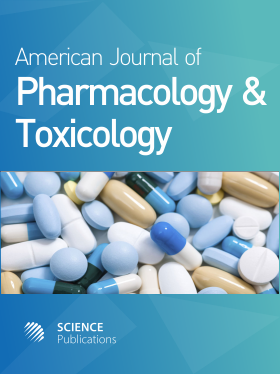Antispasmodic Activity of Persea cordata Vell. Mez. (Lauraceae) Fractions on Guinea Pig Ileum Induced by 5-Hydroxytryptamine and Bradykinin
- 1 Itajaí Valley University (UNIVALI), Brazil
- 2 Catarinense Plateu University (UNIPLAC), Brazil
Abstract
Problem statement: Persea cordata previously demonstrated antispasmodic action against two neurotransmitters. It is important confirm such action against other neurotransmitters. Approach: Present study described the antispasmodic activity of polar (EtOAc; n-BuOH) and non polar (n-hexane; dichloromethane) fractions from the bark of Persea cordata, against guinea pig ileum contracted by 5-hydroxytryptamine (5-HT) and bradykinin (BK). Results: The results indicated that hexane and dichloromethane fractions caused the most significant relaxant activity against both neurotransmitters tested. Conclusion: The effects seem to be related to the evidenced presence of steroids and terpenes, but additional studies were in progress to identify the active principles of this plant.
DOI: https://doi.org/10.3844/ajptsp.2008.229.233

- 6,013 Views
- 4,438 Downloads
- 4 Citations
Download
Keywords
- Persea cordata
- antispasmodic activity
- guinea pig ileum
- terpenes and steroids
